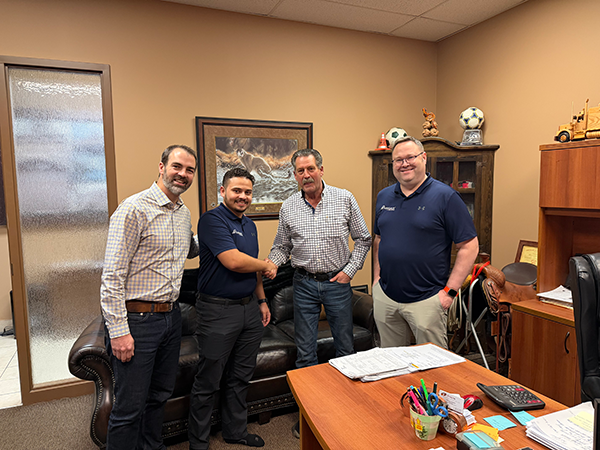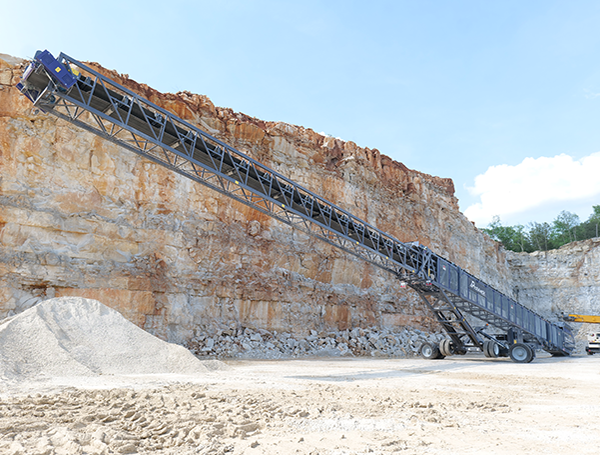Liberia, located on the west coast of Africa, is a country rich in mineral deposits, including iron ore, gold, and diamonds. Mineral extraction in Liberia has been a prominent export and a key contributor to the country’s gross domestic product. According to Global Data, Liberia is the world’s thirteenth-largest producer of iron ore in 2023, with output up by 2% on 2022. Over the five years to 2022, production from Liberia decreased by a CAGR of 0.87% and is expected to rise by a CAGR of 0.05% between 2023 and 2027.
Efficient port operations are vital for the iron ore industry in countries such as Liberia because they streamline bbulk material handling – minimising turnaround times and logistical holdups – to ensure that minerals like iron ore can reach global markets quickly and cost-effectively.
Conveyor systems play a crucial role in enhancing efficiency in port operations, while also reducing labour costs and improving overall safety. Unlike traditional loading methods that rely on truck hauling or manual handling, conveyors provide a continuous, high-speed flow of material, significantly reducing loading and unloading times. By minimising manual labour, they also lead to cost savings and a lower risk of workplace injuries or contamination. From an environmental perspective, electrically powered conveyors produce fewer emissions compared to diesel-powered alternatives, making them a more sustainable choice for bulk material handling.
Further efficiencies can be gained by radial telescopic ship loading, which allows the equipment operator to load, trim and hatch change from one fixed feed in point. With the feed in point staying fixed, the result is less machine movements whilst loading, resulting in increased efficiency and reduced risk of demurrage penalties during the ship loading process. Combined with hydraulic raise lower features, radial conveyors can transport into the vessel, complete set up, load and manoeuvre.
The addition of mobility greatly increases the value radial conveyors bring to ports, allowing the equipment to be rapidly deployed to the quayside and put back into storage when the loading process is concluded. This manoeuvrability and small footprint allow the berth to be re-purposed when ship loading is not in operation.
These advantages are particularly relevant in the deployment of a ProStack
TW 42-170 telescopic conveyor at a port handling iron ore in Monrovia, Liberia. The ProStack TW 42-170 conveyor was integrated into a two-phase material handling process, ensuring efficient stockpiling and vessel loading while maximising mobility and operational flexibility. The conveyor, which was engineered in the ProStack centre of excellence in Northern Ireland and built in the Terex Malaysia facility, was transported to Liberia in five 40 ft high-cube containers, utilising a lattice design to reduce weight. The assembly process took two weeks and was completed by one ProStack field service technician and four local labourers. Once in operation, the conveyor’s ability to streamline both stockpiling and ship loading has improved perational efficiency while supporting safer and more environmentally friendly practices.
Customer requirements
The customer required a solution that could efficiently stockpile iron ore into closed warehouses and at a later stage load the material onto Handymax vessels (50 000 dwt) at a rate of 1500 tph. The system needed to be mobile, self-propelled, and capable of seamless movement between warehouse stockpiling and ship loading operations.
The ProStack TW 42-170 rotating telescopic conveyor was selected due to its capability to operate in both phases of material handling while maintaining mobility. The design featured a 170 ft (52 m) long rotating telescopic conveyor with a 42 in (1050 mm) wide belt, capable of 270° radial movement. A tracked tugger was integrated to enable mobility across the site, allowing efficient repositioning as needed.
In terms of stockpiling capabilities, the system featured automated stockpile pattern configurations to maximise capacity and access, while reducing material degradation, contamination, and compaction, with a total stockpiling capacity of approximately 182 176 t.
Operational features included a PLC-controlled speed variation system that allowed improved stockpile quality and desegregation. A wireless remote control enabled flexible operation, allowing the user to control the conveyor either from the vessel or remotely.
Operational phases
During Phase 1, mined and processed iron ore was transported by rail to Monrovia. Upon arrival, the material was offloaded and stockpiled in a closed warehouse using the mobile telescopic conveyor, where it remained until the shipment was ready. In Phase 2, once a Handymax vessel docked, the stockpiled iron ore was transferred from the warehouse using the mobile conveyor system. The material was then loaded onto a mobile ship loader, which fed the ore into individual hatches of the vessel.
Environmental considerations
The Monrovia port benefited from the ProStack TW 42-170 plug-in electric power system that minimises fuel consumption, resulting in improved energy efficiency while having lower greenhouse gas emissions compared to diesel-powered alternatives. Further environmental advantages gained was reduced dust emissions during material handling via enclosed belt with covers, supporting the compliance with environmental and safety regulations.
Safety Features
Safety features were a key consideration in the implementation. Anti-collision sensors were installed at the inner head section to prevent vessel hatch collisions, while radial safety shut-off switches protected against ground collisions. Pull cord emergency stops were positioned on the chassis and walkways for rapid shutdown in emergency situations. Additional safety measures included material and zero-speed sensors to detect belt slippage or overload, along with an enclosed head shroud featuring a directional-only rubber chute to further enhance operational safety. Finally, dual walkways were incorporated to provide safer and more convenient access for maintenance.
Conclusion
The ProStack TW 42-170 telescopic conveyor successfully met the customer’s requirements by providing a highly mobile, efficient, and safe solution for iron ore handling in Liberia. The ability to seamlessly operate in both stockpiling and ship loading phases with a single conveyor system significantly enhanced operational efficiency. Mobility, through the tracked tugger system, allowed quick relocation to different parts of the site, reducing downtime, and improving material flow. Automated stockpile patterns optimised material organisation, minimising contamination, and ensuring consistent product quality. Safety and dust control measures further improved operational sustainability and regulatory compliance.
Its dual-phase operation, combined with automated stockpile management and advanced safety features, contributed to a streamlined bulk material handling process, maximising productivity, and supporting the site’s compliance with operational standards.
First published on Dry Bulk Magazine.







